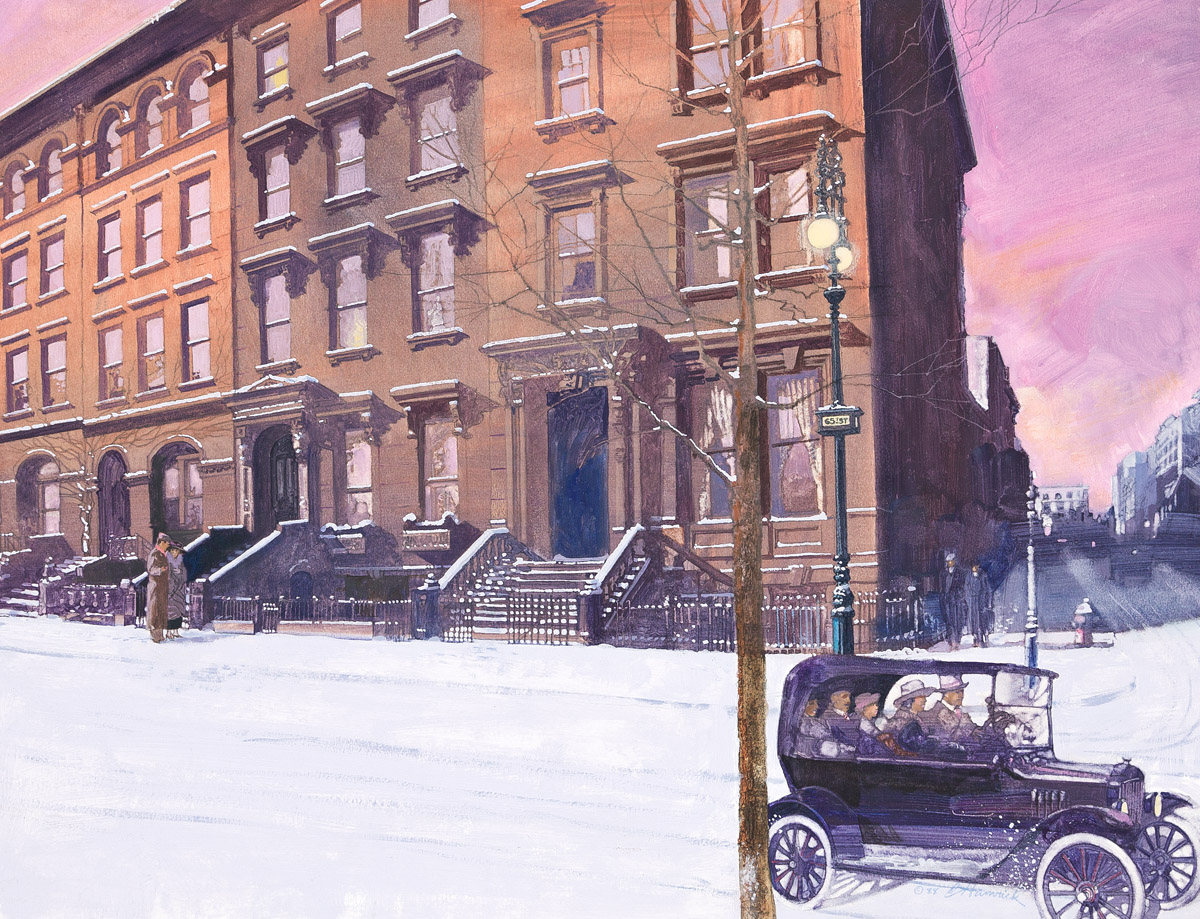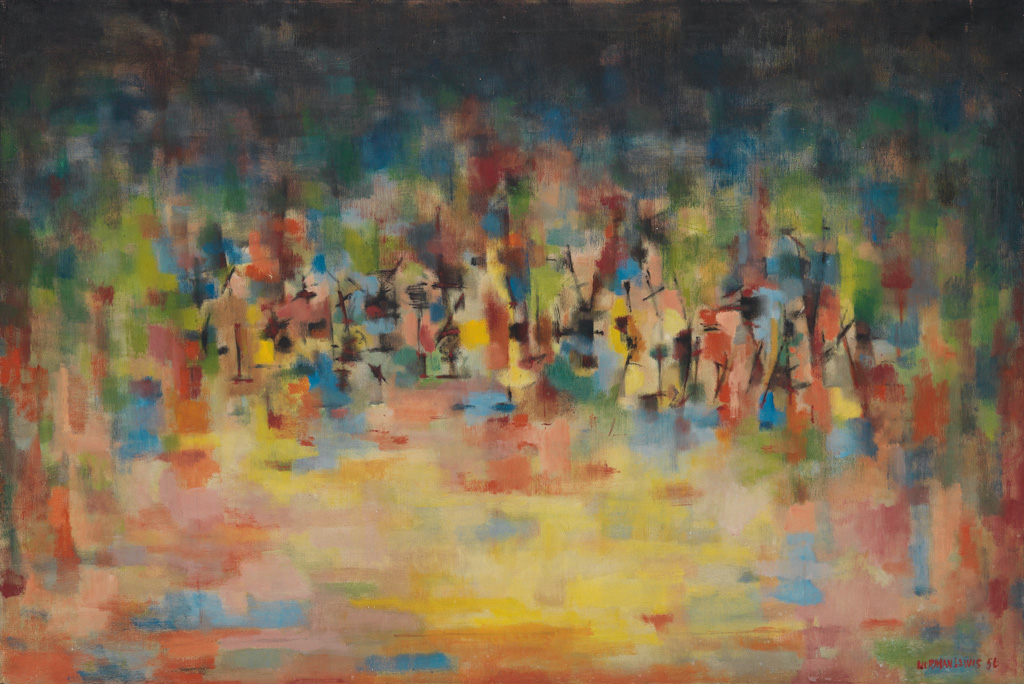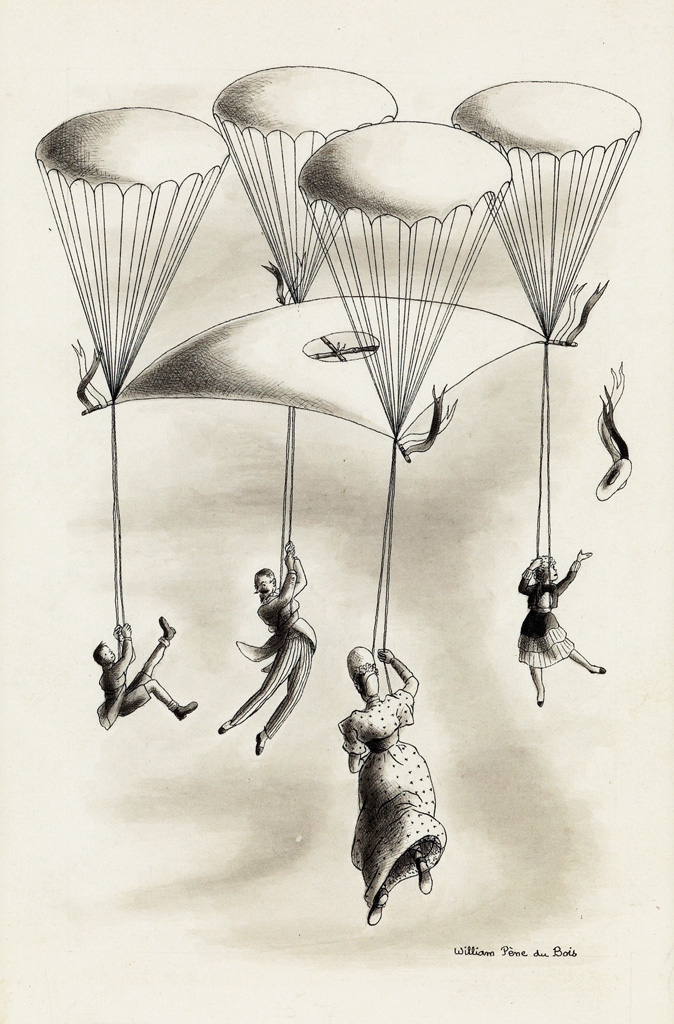Early Women Cartoonists of The New Yorker
The New Yorker debuted in 1925 amid the country’s post-World War I economic boom and on the heels of the passage of the 19th Amendment, which granted women the right to vote in 1920, marking a social and cultural shift in the lives of women. Throughout the latter half of the 1920s, a growing number of primarily white, middle- to upper class women energetically embraced their newfound feeling of independence and aspired to take advantage of the new opportunities afforded to them beyond the domestic sphere. Women artists entered the commercial field in larger numbers, producing illustrations for books, magazines, and advertisements. Those who created comic strips and cartoons pushed back against the prevailing cultural stereotype that women had no sense of humor.
Since its inception, The New Yorker has included the work of women cartoonists who embodied the type of refined and sophisticated humor the publication sought to project. Despite whether they chose to play into or fight against contemporary cultural stereotypes of women, early women cartoonists often presented perspectives and commentary on cultural quirks and foibles, offering a viewpoint that countered a society dominated by men. Such women paved the way for subsequent generations of humorists who can perhaps now shed the label of “women” and just be “cartoonists.”
Helen Hokinson (1893-1949)
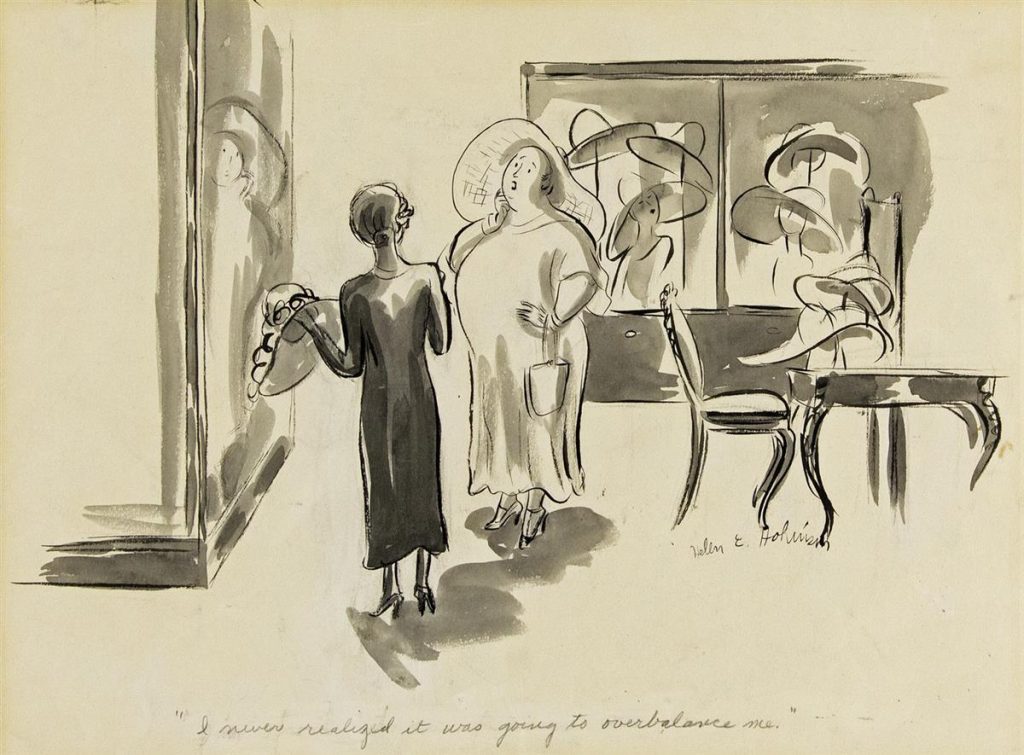
Hokinson published her first drawing in The New Yorker on July 4, 1925, beginning a wildly successful professional relationship with the magazine that would last for more than twenty years. Hokinson’s early cartoons focused on the young upper class “New Woman” independently navigating urban life in the city’s streets, stores, offices, and cultural institutions, which reflected the daily life and experiences of the publication’s target femme readership in the 1920s. Though Hokinson often used satire to poke fun at her subjects (and by extension, her readers). As cartoonist Liza Donnelly stated in her 2005 book Funny Ladies, the humor of Hokinson and other women cartoonists of the early New Yorker “mirrored and perhaps eased difficult times for women” during a time of societal transition. (36)1
Hokinson’s humor style began to shift in 1931 when she started closely collaborating with James Reid Parker on captions and concepts for her cartoons. No longer primarily concerned with the young urban set, Hokinson became known for her portrayal of stout middle-aged matrons and their world of privilege amid the women’s clubs, vacation resorts, beauty salons, and shops that surrounded Hokinson in the Connecticut suburbs. These “Hokinson Women” appeared in The New Yorker regularly and were very popular among readers. Though the portrayals of the matrons were often unflattering and poked fun at their naiveté, readers perhaps both sympathized and identified with the struggles of the aging women attempting to navigate a rapidly-changing modern world. As Donnelly notes, the freedom of expression that women enjoyed in the 1920s declined as the country moved into The Great Depression, and humor “slowly mov[ed] toward jokes aimed at women, something that evolved over the 1930s.” (81)
Alice Harvey (1894-1983)
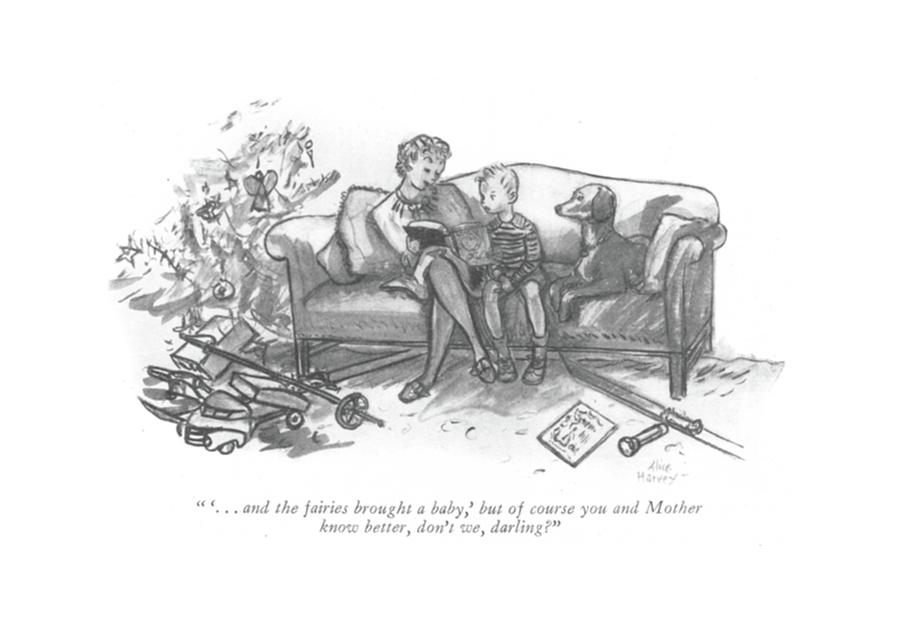
Alice Harvey and Helen Hokinson became friends while attending the School of the Art Institute of Chicago, where she studied under Wallace Morgan, whose influence is immediately apparent in her line work that is full of energy and movement. Harvey and Hokinson were roommates and both attended the School of Fine and Applied Arts (now Parsons School of Design). The pair drew newspaper comic strips together before they began submitting to magazines, where Harvey experienced success in the pages of Life, Judge, and other leading publications of the day, including The New Yorker, where she published her first cartoon in November 1925.
In 1925, Harvey married, moved out of the city to Westport, Connecticut, and began having children—life events that influenced the subjects of her cartoons, which largely focused on the middle-class suburban scene and domestic life. Such cartoons would have resonated with another segment of the magazine’s femme readership, who were settling outside the city. Donnelly describes Harvey’s humor as more “hard-edged” than the “gentler mocking” of Hokinson (44). Unlike Hokinson, Harvey largely wrote her own captions and developed her own ideas in the early days, which was uncommon even among men cartoonists at the time. Harvey would continue contributing to The New Yorker until the mid-1940s.
Barbara Shermund (1899-1978)
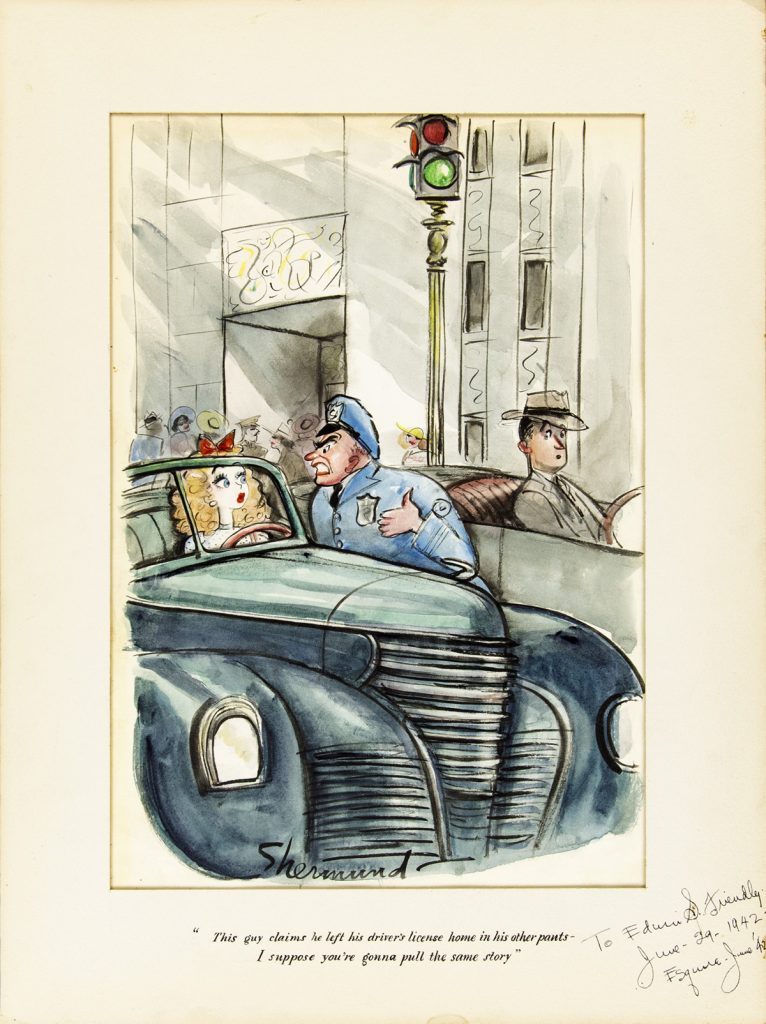
Barbara Shermund published her first cartoon in The New Yorker in January 1926. Like Hokinson, Shermund chose the “New Woman” as her primary subject and her early drawings have a decidedly feminist edge. Whether brazenly confident or slightly clueless, Shermund’s women in her early cartoons were not afraid to openly voice their views on dating, marriage, and men, which were often unconventional and rarely before seen in print. Her bold and dynamic line work stylistically reflects the outspoken women in her cartoons, which appeared frequently in the early years of The New Yorker and appealed to the publication’s forward-thinking readership.
Shermund frequently offered commentary on conventional gender norms, and her cartoons were often set in the typically feminine domains of the department store or beauty salon, where she pokes fun at the extensive and laborious fashion and beauty routines expected of women. However, by the 1940s, her cartoons lost much of their feminist edge, and her women became more silly and preoccupied with attracting men. At the same time, Shermund veered away from her classical training and took a more stylized approach to rendering women. Under Shermund’s brush, their buxom bodies became almost doll-like in their exaggerated curves, large eyes, and pouty lips. This is especially true of Shermund’s cartoons for Esquire, whose racier content was meant to appeal to a masculine readership.
Mary Petty (1899-1976)
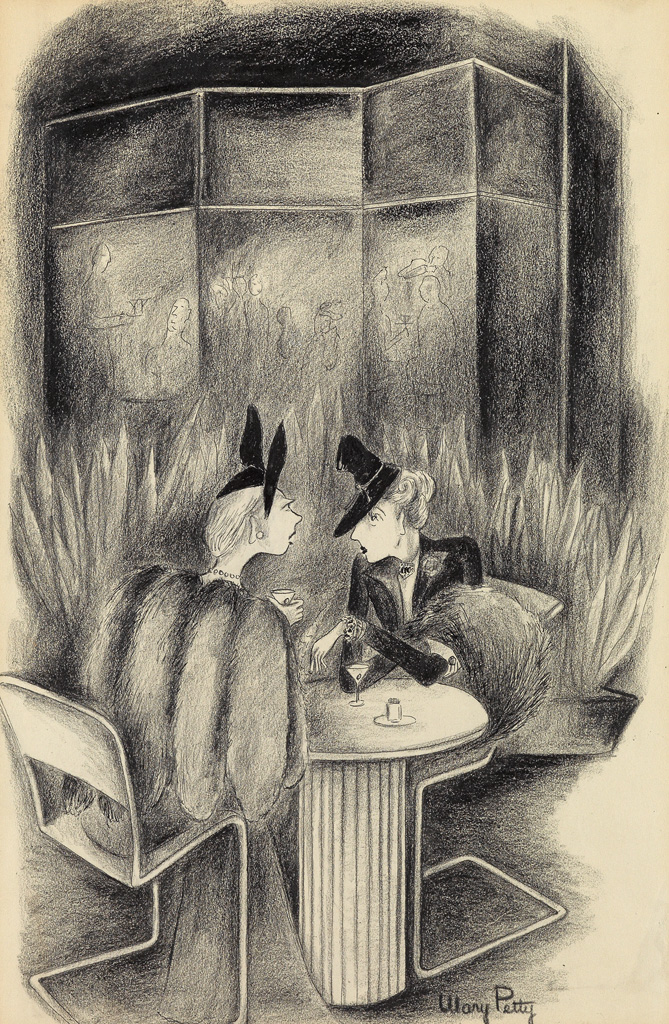
Mary Petty, “A man named Balzac wrote the book and Hugo Dresser, Nat Marcus, Eddie Katz, Joe Prout, Sid Prosser and Irving Rothberg wrote the screenplay.” Cartoon for The New Yorker, published April 17, 1937. Crayon, pen, and ink on paper. Sold March 2017 in our sale of Illustration Art for $4,000.
Mary Petty began selling cartoons to The New Yorker in October 1927. Unlike most other cartoonists drawing for the magazine at this point, Petty was not formally trained as an artist, and distinct from her peers of women cartoonists, Petty was more concerned with social consciousness than gender. Her wry humor tended to focus on class dynamics, which was becoming increasingly relevant as the 1920s came to a close and the country fell into the Great Depression.
Petty is best remembered for her later cartoons, which gently satirized the privileged world of the upper class and often featured the wealthy elite socializing at parties or in swanky restaurants. She became famous for her recurring cartoons and covers featuring a wistful young parlor maid named Fay striving to satisfy the Peabodys, her impossibly demanding aristocratic employers. This series, largely set in the lavish interior of a Victorian brownstone on Manhattan’s Upper East Side, highlights Petty’s skill at rendering detail, especially in clothing, furniture, and decoration.
Roberta MacDonald (1917-1999)
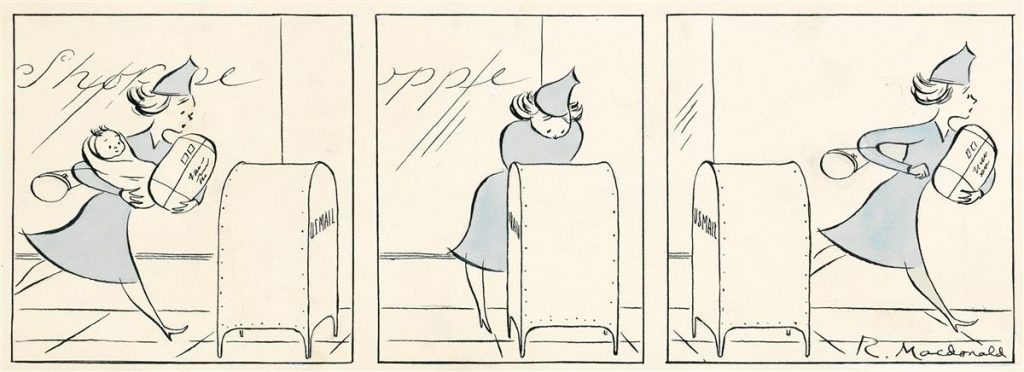
Roberta MacDonald sold her first drawings to The New Yorker on May 4, 1940, joining the magazine at a time when some of the regular men cartoonists were fighting in World War II. MacDonald’s early work showed her interest in politics and she frequently drew women at work, and notably, in the military as members of the Women’s Army Corps. Donnelly notes that MacDonald’s cartoons were largely traditional in their attitude toward women and that her cartoons “concerning marriage and child-rearing show how women in the forties were exhibiting independence, though the humor is often derived from knocking that independence.” (95) MacDonald’s line work exhibits an elegant simplicity that allows the reader to clearly and quickly understand her cartoons, which were often presented in multiple panels and without captions.
Looking Forward to the Future of Women Cartoonists
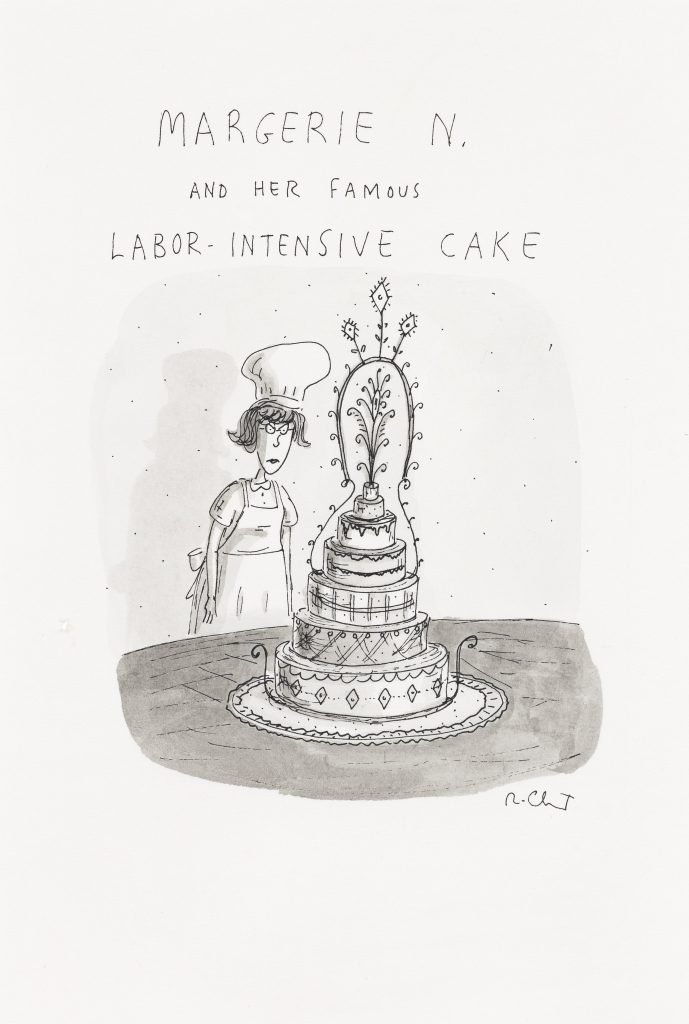
As Donnelly states, in the early days of The New Yorker, women cartoonists presented their world as a valid subject and fertile ground for humor. (76) The publication’s birth in 1925 coincided with a pivotal cultural shift in the country’s views toward women. While cultural attitudes toward women changed over the decades, The New Yorker’s cartoonists and their content similarly shifted with the times, from Barbara Shermund’s fiercely independent “New Woman” in the mid-1920s to Roberta MacDonald’s frazzled wives and mothers of the 1940s.
Thanks to societal advancements and our continuing movement toward gender equality, eventually, women cartoonists were no longer restricted to so-called feminine subjects. Cartoons by current regulars, such as the longtime contributor and modern favorite Roz Chast, are more universal in their scope of humor.
- Liza Donnelly. Funny Ladies: The New Yorker’s Greatest Women Cartoonists and their Cartoons (New York: Prometheus Books, 2005).
Do you have a New Yorker cartoon we should look at?
Learn about how to consign to an auction, and send us a note about your item.
